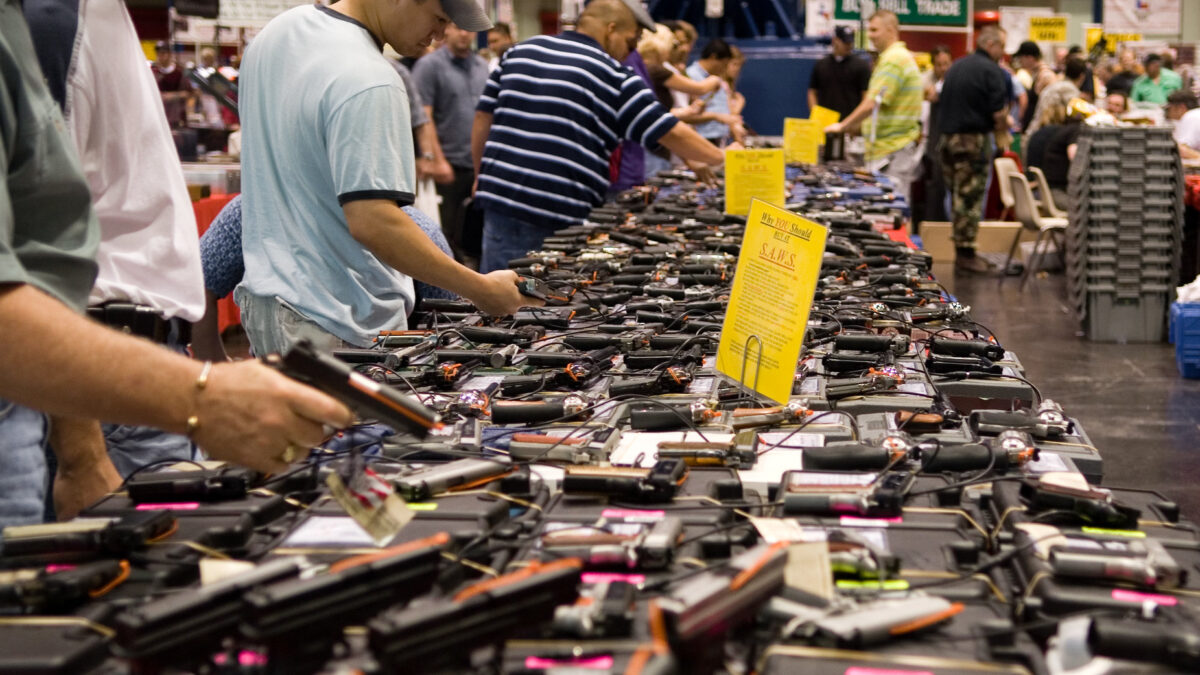Support for a so-called assault weapons ban in the U.S. just hit a record low of 36 percent, according to a new Gallup poll released on Wednesday. The poll showed that 61 percent of American adults now oppose a ban. That level of opposition is the highest ever recorded.
Increasing opposition to the 1990’s-era gun ban isn’t just limited to Republicans. Gallup’s data show that opposition to the ban has increased across the board. Barely 50 percent of Democrats currently support the ban today, compared to 63 percent support from Democrats in 1996, just two years after the federal ban was signed into law. Less than a third of independents currently support a ban, while Republican support hovers at 25 percent.
An assault weapons ban is also widely opposed by those who don’t even own guns. Gallup’s latest survey found that only 45 percent of households without guns support the ban, compared to 26 percent support among households with guns.

In its summary of the new poll, Gallup expressed surprise at the results and described flagging support for a ban in the midst of a terrorism spree as a “paradox”:
Perhaps paradoxically, opposition toward a ban has increased against a backdrop of multiple mass shootings and terrorist attacks in which the perpetrators used assault rifles. These guns were used in high-profile incidents, including the terrorist attacks in San Bernardino, California, and Orlando, and the mass shootings in Aurora, Colorado, and Newtown, Connecticut.
Gallup also completely botched both its definition of “assault weapon” and its characterization of “assault rifles” in the introductory paragraph of its poll summary:
WASHINGTON, D.C. — The fewest Americans in 20 years favor making it illegal to manufacture, sell or possess semi-automatic guns known as assault rifles. Thirty-six percent now want an assault weapons ban, down from 44% in 2012 and 57% when Gallup first asked the question in 1996.
Contrary to Gallup’s characterization, the terms “assault weapon” and “assault rifle” are neither synonymous nor interchangeable. An assault rifle, by definition, must be capable of both semi-automatic (one round fired per trigger pull) and fully automatic fire (multiple rounds fired per trigger pull). This combined capability is referred to as select-fire or selective-fire. The U.S. military defines an assault rifle as a “selective-fire rifle chambered for a cartridge of intermediate power.” If you Google the term “assault rifle,” the search engine will tell you that an assault rifle is “a rapid-fire, magazine-fed automatic rifle designed for infantry use.” Long story short: if a rifle is purely semi-automatic, it is by definition not an assault rifle.
Actual assault rifles have been heavily regulated in the U.S. since 1934. In 1986, the new manufacture of these types of guns for non-military use was banned outright. Under current law, civilians may only own pre-1986 assault rifles if they possess a special tax stamp issued by the federal Bureau of Alcohol, Tobacco, Firearms and Explosives (ATF). These stamps cost hundreds of dollars, require extensive background checks, and take months (if not years) to be issued by the ATF.
For that reason, the 1994 assault weapons ban is completely agnostic on the legality of civilian ownership of fully automatic assault rifles. One problem faced by the authors of the 1994 law was that there was no accepted definition of what constitutes an assault weapon. Is it any object that can be used to assault someone? Or is it any gun that can be used to assault someone? If it’s the latter, are there guns that are designed in such a way that it would be impossible to assault someone with them?
Rather than being a specific dictionary or industry term, “assault weapon” is a purely political invention. Outside the law, it can mean whatever its user wishes it to mean. Within the confines of the 1994 law, however, it had a specific meaning (and one wholly unrelated to Gallup’s characterization of what constitutes an assault weapon).
Under the 1994 law, a semi-automatic rifle magically became a banned assault weapon if it had any two of the following five cosmetic features in addition to a detachable magazine: a collapsible stock, a pistol grip, a bayonet mount, a flash suppressor, or a grenade launcher. Those features have no real impact on the functionality of a weapon. A gun that lacked those cosmetic features would be every bit as lethal as one that included every single feature. In fact, to get around the law, many owners simply pinned and welded their stocks and pinned and welded a muzzle brake to the barrel to make their rifles compliant with the 1994 law. And contrary to the predictions by the law’s supporters that its expiration in 2004 would lead to a rifle-fueled crime wave, the exact opposite happened. Even today, you are more likely to be killed by someone’s fists or feet than you are to be killed by a bullet fired from a rifle (pistols, not rifles, are the weapon preferred by the overwhelming majority of violent criminals).
Which brings us back to Gallup’s alleged paradox of opposition to the so-called assault weapons ban increasing in the midst of a wave of terrorist shootings. There is actually nothing at all paradoxical about it. Americans understand that terrorists want to murder us, and that our laws are no obstacle to their blood lust. They will use planes, or bombs, or trucks, or knives, or boxcutters, or guns. Just as strict gun control laws in cities like Chicago and Washington, D.C., have done nothing to prevent sky-high murder rates in those cities year after year, poorly thought out laws regulating rifles will do nothing to prevent terrorists from trying to murder innocent Americans.
Americans also understand that while gun control laws don’t necessarily deter violent criminals or terrorists, they do make it harder for innocent Americans to protect themselves from those same criminals and terrorists. And when you take into account the U.S. government’s continued failure to protect its people from terrorist attacks, increasing opposition to laws that make it harder for people to defend themselves and their families makes perfect sense. If the government is not willing or able to perform its duty to protect the homeland, then people will feel compelled take matters into their own hands, and they will bristle at any attempt to neuter their right to self-defense.
The new Gallup poll showing record low support for new gun control laws shows that Americans understand just fine both the futility of gun control laws and the new reality of a government that can’t prevent terrorism. That’s not a paradox. It’s common sense.









